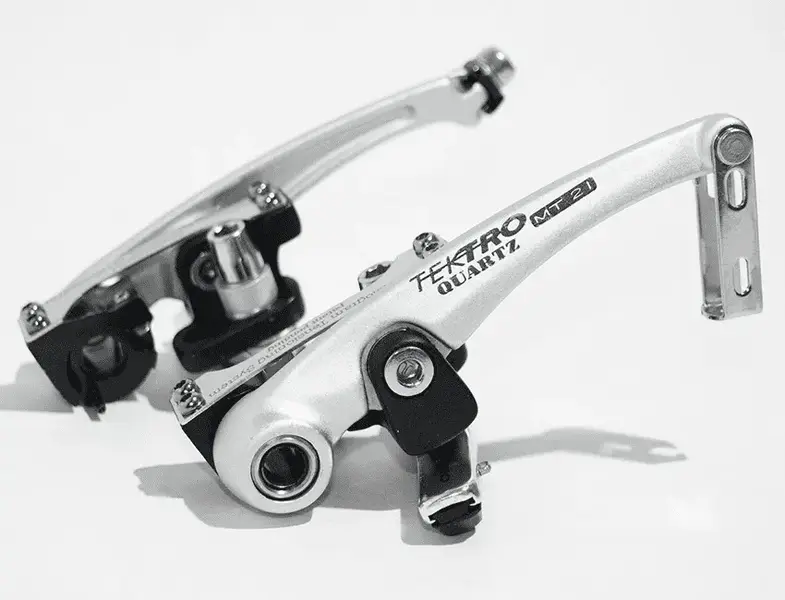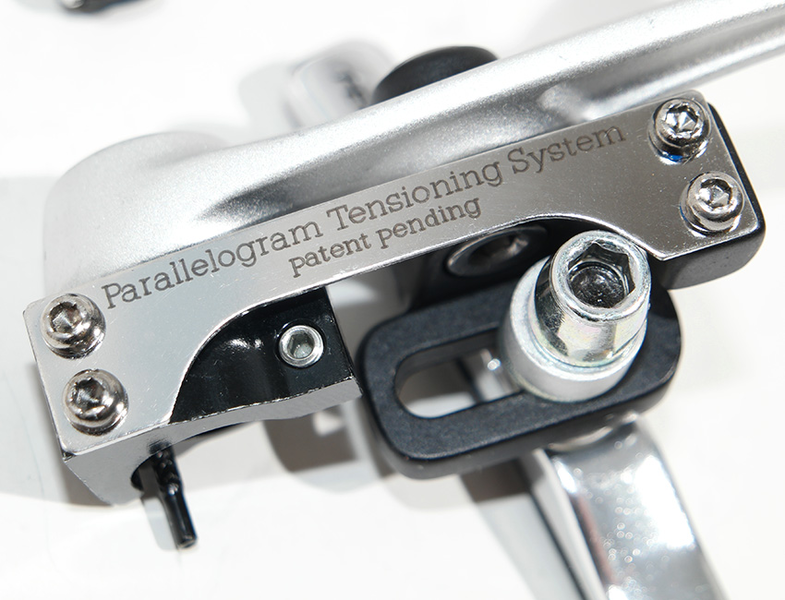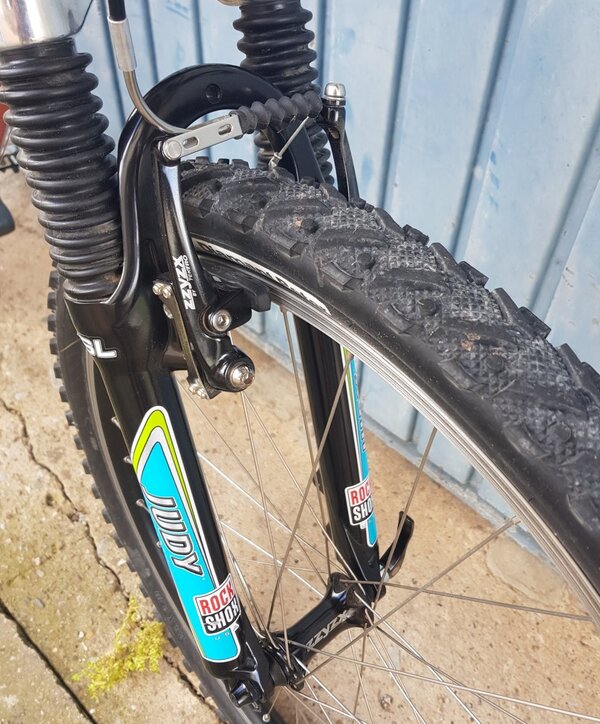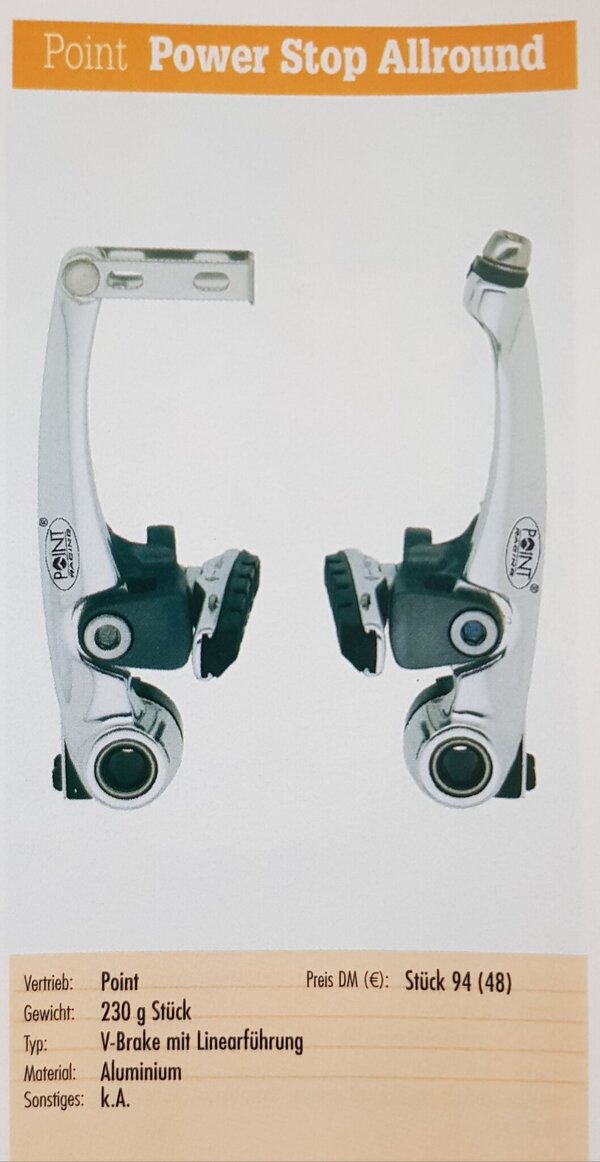I always thought the genius with the V-brake was the noodle if anything. That short plumbing off-cut a major problem solver, because let's be honest the arms are not radical per say. Starting to think now though that the real genius was to move away from the short pull lever to allow for a complete new rim brake system to work on the millions of legacy frames with cantilever bosses.
When I bought my first V-brakes they were Tektro Parallel Push (RBP?) costing a small fortune and were sold as a complete brake set with levers as an upgrade. For as long as I have been on this site I have never seen a pair of them, I think they were one of the first V-brakes on the market.
Some half arsed research indicates that MAFAC specified the lower boss position in 1948 with dimensions and specific braze-ons in their catalogues for their new fangled cantilevers. I guess in USA the specification was altered for wider 26" wheels, but I have no idea if such a standard for boss placement actually exists or was a case of copying from one frame to another in the early days of experimentation. Easy to understand too that an evolved rim brake system would favour a lower pivot point with telescopic suspension forks starting to appear.
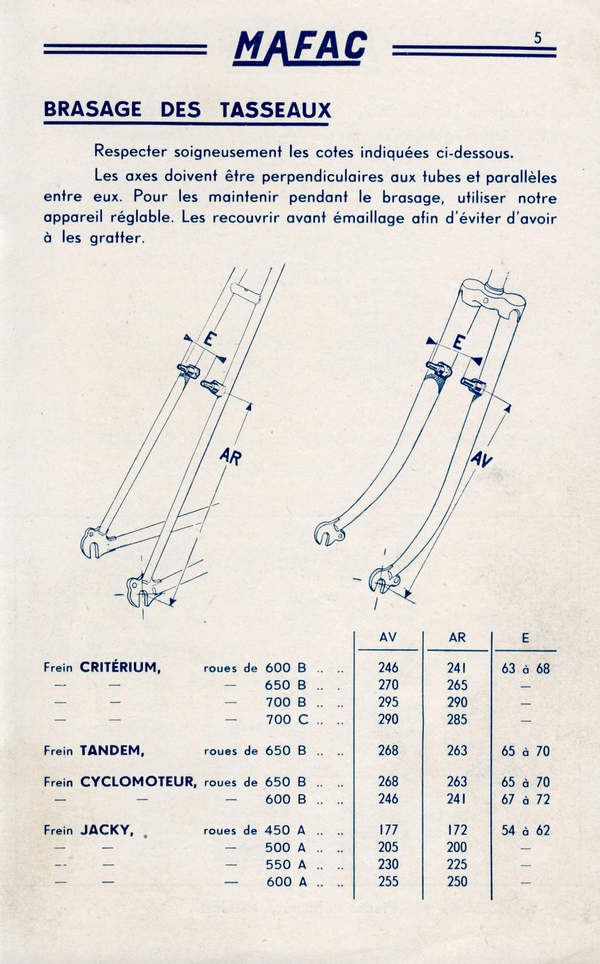
When I bought my first V-brakes they were Tektro Parallel Push (RBP?) costing a small fortune and were sold as a complete brake set with levers as an upgrade. For as long as I have been on this site I have never seen a pair of them, I think they were one of the first V-brakes on the market.
Some half arsed research indicates that MAFAC specified the lower boss position in 1948 with dimensions and specific braze-ons in their catalogues for their new fangled cantilevers. I guess in USA the specification was altered for wider 26" wheels, but I have no idea if such a standard for boss placement actually exists or was a case of copying from one frame to another in the early days of experimentation. Easy to understand too that an evolved rim brake system would favour a lower pivot point with telescopic suspension forks starting to appear.

